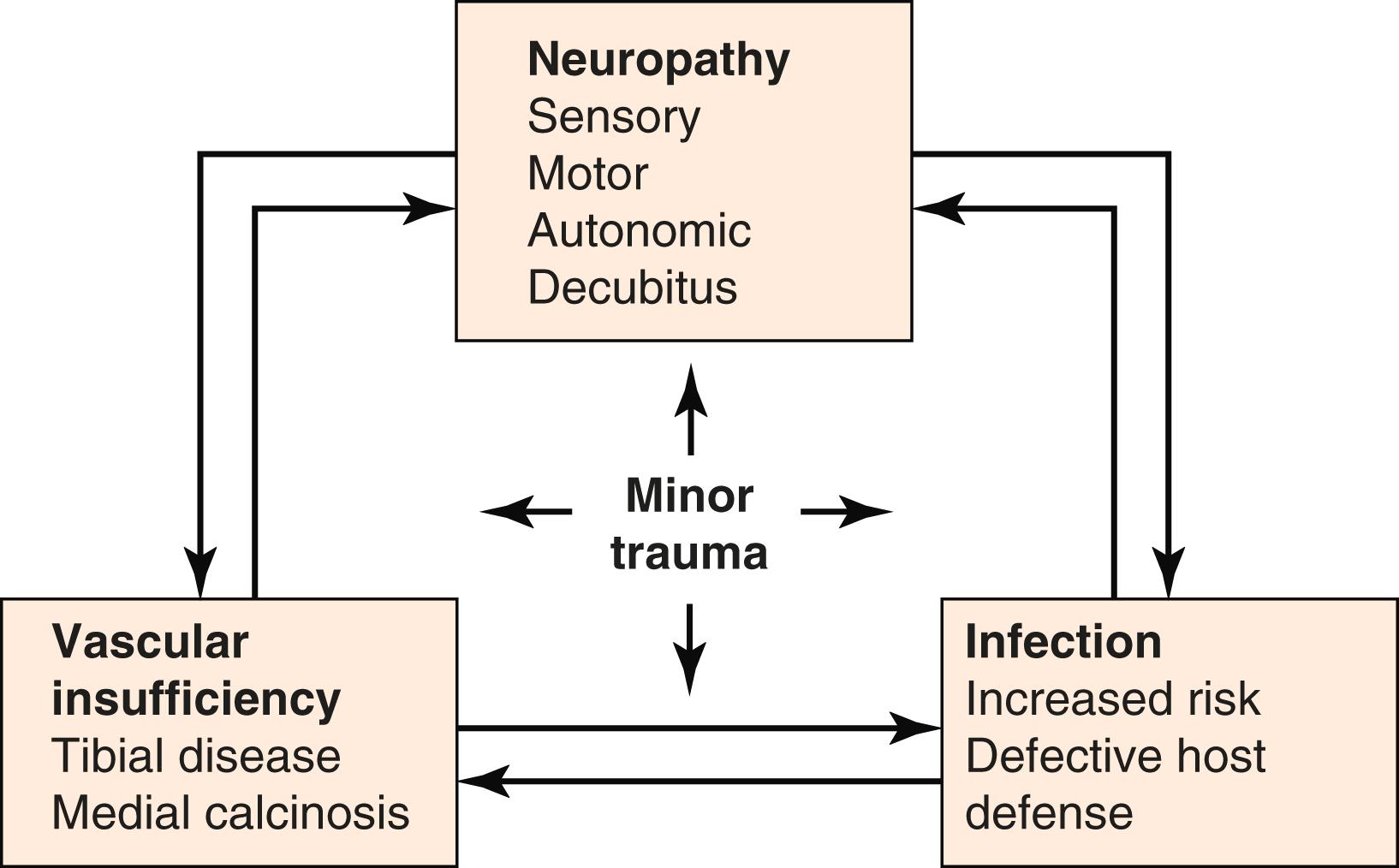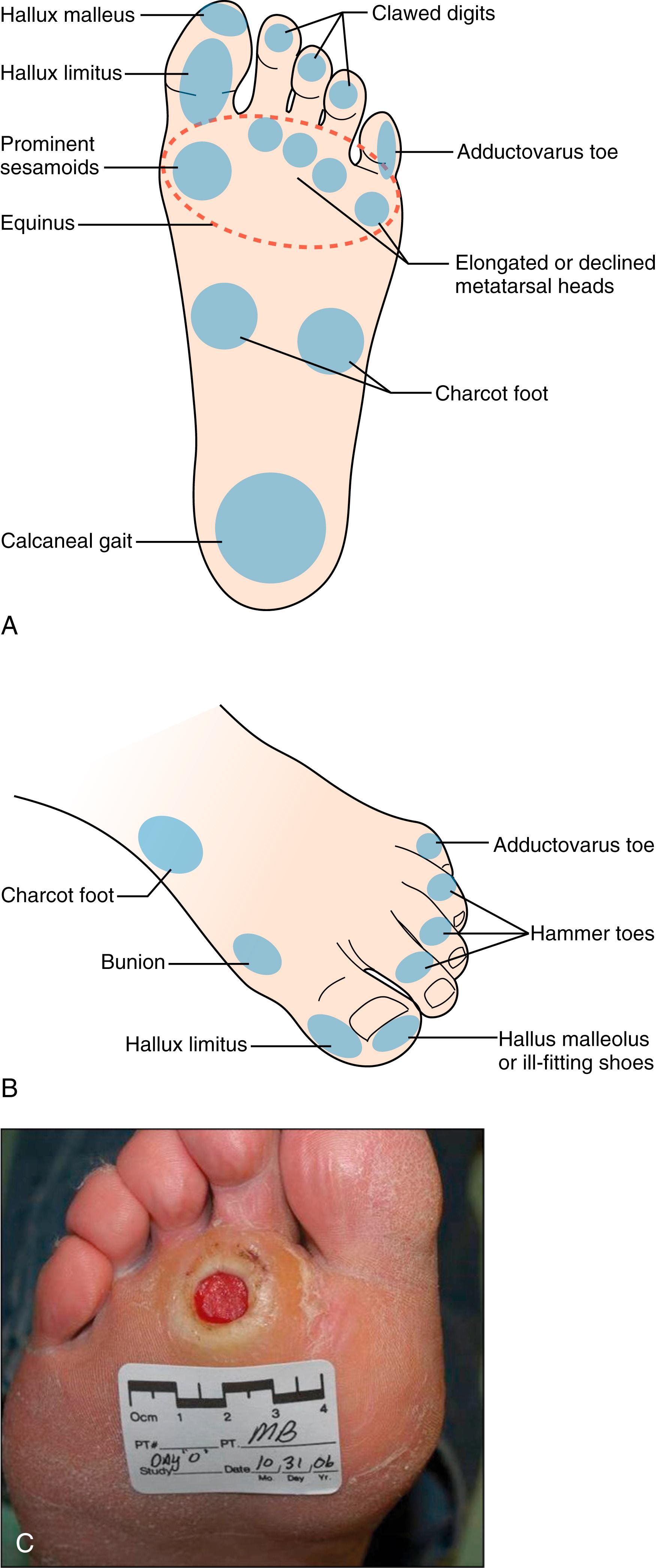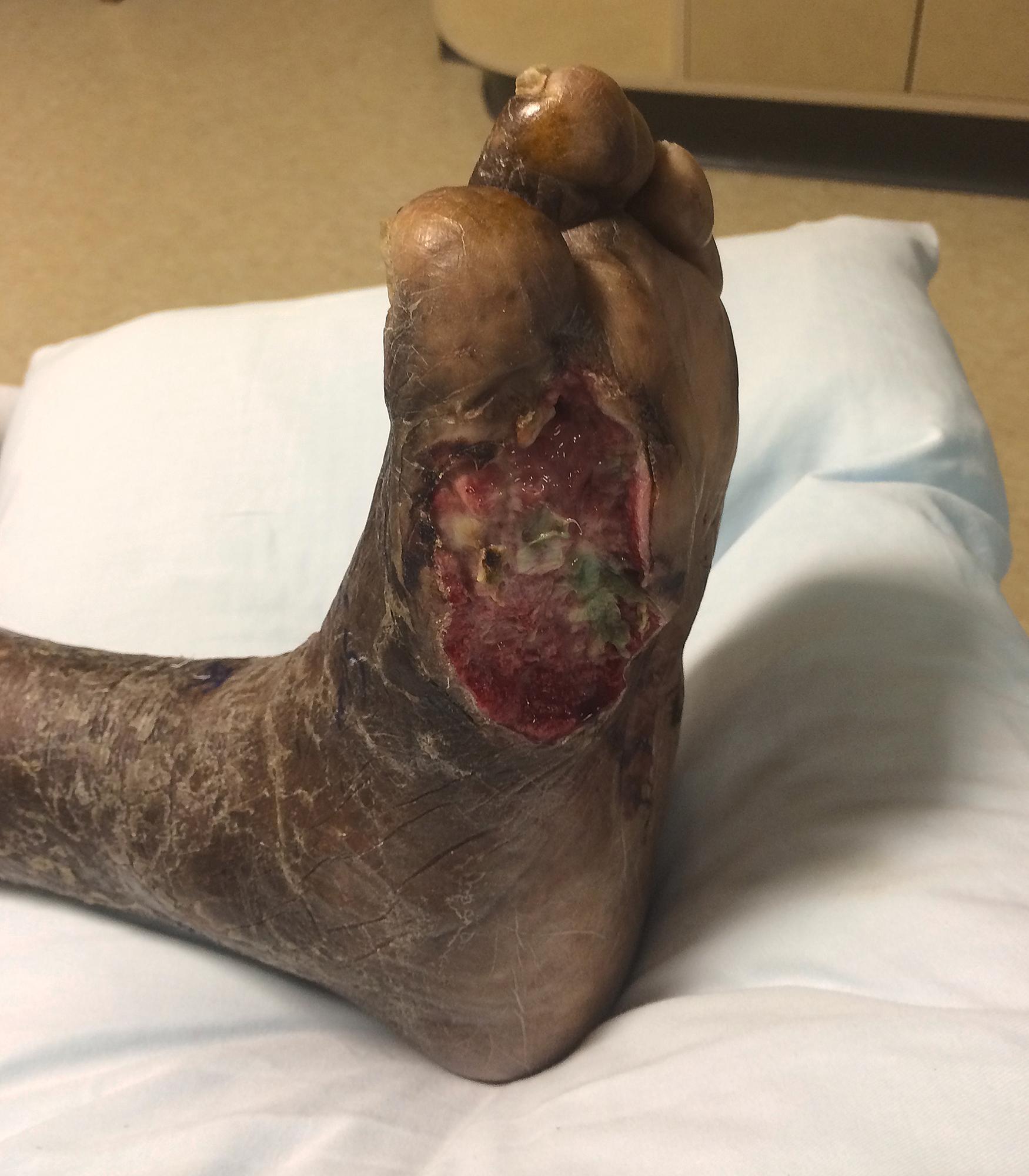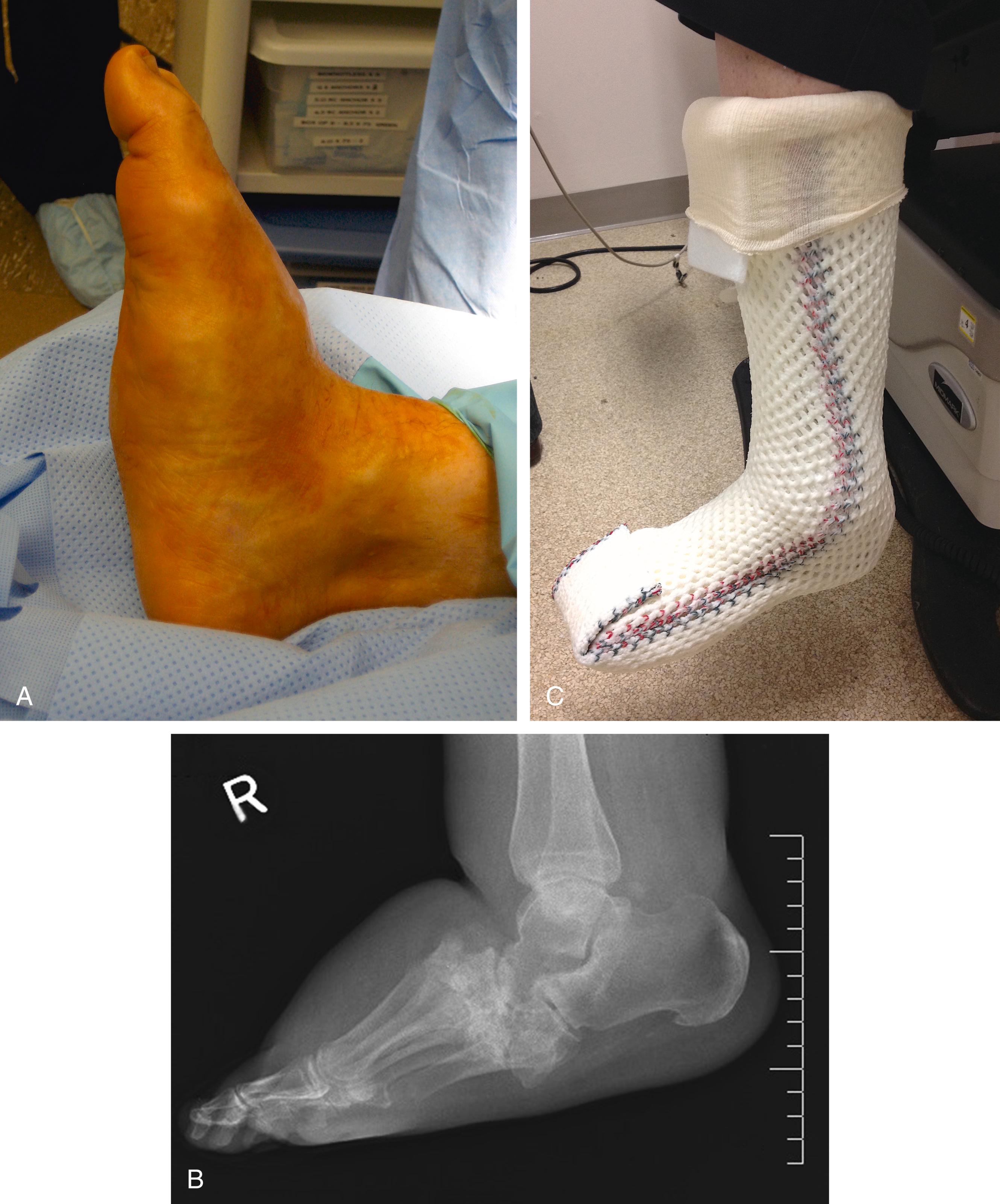Physical Address
304 North Cardinal St.
Dorchester Center, MA 02124
Diabetes and its subsequent complications, including diabetic foot disease, is a rapidly growing global health pandemic and a major financial burden on healthcare systems worldwide. The International Diabetes Federation estimated that over 463 million people suffer from diabetes in 2020 and that the total number of people with diabetes is predicted to rise to 578 million by 2030 and to 700 million by 2045. China, India and the USA remain the top three countries with the largest number of diabetic patients and diabetes was the seventh leading cause of death in 2010. Diabetes is the leading cause of foot pathology, causing foot ulcerations from neuropathy, infection, and ischemia. Indeed, most nontraumatic amputations in the United States and Canada are secondary to diabetic foot ulcers. , Among people within the United States, up to 15% have active ulcers and 1 in 4 have a lifetime risk of developing a diabetic foot ulcer. Infection occurs in approximately half of diabetic foot ulcers, and many of these require amputation. As such, diabetic foot ulcers are one of the most costly aspects of diabetes care, and ulcer-related complications are the leading cause of hospitalization for diabetic patients. Even if a diabetic foot ulcer is treated, the recurrence rate of an ulcer ranges from 35% at 1 year to 77% at 5 years. This has led to a growing risk of amputation among diabetic patients, because 85% of patients presenting with a nonhealing foot ulcer are at risk for a subsequent amputation.
Beyond their devastating complications, such as amputation, diabetic foot ulcers have also been associated with poor quality of life outcomes and a significant financial burden, both to the patient and to the economy through direct costs and lost productivity. In 2012 the financial cost of diabetes within the United States was over $245 billion, including $176 billion in direct medical costs and $69 billion in indirect costs related to disability and loss of productivity. The reduced mobility, multiple prolonged hospitalizations, clinic visits, and the deteriorating quality of life lead to cardiovascular stress and an increased risk of mortality compared with the general population. In fact, patients with a diabetic foot ulcer have an annual mortality rate approaching 10%, with an increase to 20% annually if an amputation is performed. Diabetic patients who undergo amputation have a median incidence of mortality at 27 months postoperatively, compared with 47 months among nondiabetic patients with amputation. In all, the 5-year relative mortality rate for those with diabetes who undergo a major limb loss is 70%.
On average, treating diabetic foot ulcers has been estimated at $8000 to $17,000 in medical expenditures and those patients who subsequently undergo an amputation require $40,000 to $60,000, depending on the extent of the amputation and the associated hospital stay. Limb amputations are also predictors of further deterioration in the patient’s health. Among patients who have undergone a major lower extremity amputation, up to 40% will undergo amputation of the contralateral limb within 3 years.
It has been well documented that socioeconomic, racial and ethnic disparities in healthcare exist. This is especially true with regards to the growing rate of diabetes around the world and the disproportionate outcomes between ethnic, racial groups and socioeconomic class. African Americans, Hispanics, and Native Americans have a higher prevalence of diabetes than non-Hispanic whites. Consequently, the incidence of diabetic foot ulcers and amputations are disproportionately higher in African Americans, Hispanics, and Native Americans. In 2008, the incidence of diabetic foot ulcers among Medicare beneficiaries was 6.0% for whites, 6.3% for African Americans, 6.4% for Hispanics, and 7.0% for Native Americans. The incidence of diabetes-related amputations in African Americans and other minorities was more than double that of whites. Medicare data from 2008 show that American Indian/Alaska Natives had an incidence rate double that of non-Hispanic whites. The level and severity of the amputation was also noted to be more significant between these groups. The lower extremity amputation rate in low-income neighborhoods is almost double that of higher-income neighborhoods. These drastic differences in outcomes is thought to be secondary to more advanced disease upon presentation, more severe comorbidities and access to medical care.
The etiology of diabetic foot ulceration is a well-understood, but multifactorial and complex process ( Fig. 116.1 ). Major risk factors associated with diabetic foot ulcer formation are diabetic peripheral neuropathy and peripheral arterial disease (PAD), which act either in isolation or concurrently. Other important risk factors include soft tissue infection, biomechanical abnormalities, peripheral edema, plantar callus formation, nephropathy, poor glucose control, age, and a prolonged diabetic course. Abnormal foot biomechanics often results from structural foot deformities combined with the limited joint mobility and bony abnormalities found in diabetic patients. Trauma due to poorly fitting footwear also frequently plays a major role in ulcer formation. Ulceration of the heel often combines decubitus or pressure forces with ischemia, resulting in a difficult management issue.

Diabetes results in both somatic and autonomic neuropathy. The onset of somatic neuropathy is insidious and progressive, eventually resulting in the complete loss of foot sensation and placing the patient at a higher risk of unperceived foot trauma and ulceration. Examples include puncture wounds while walking barefoot, burn wounds, and iatrogenic or self-induced trauma while cutting nails or grooming the skin. Furthermore, loss of sensation places the patient at a higher risk of injury when donning improperly fitted shoes. Somatic neuropathy also leads to muscle wasting and eventual flexor–extensor muscle imbalance, weakening of the anterior calf muscles, and the development of an equinus deformity. The forefoot is the most common site of neurotropic ulceration as a result of those diabetes-induced muscle imbalances. Patients with isolated diabetic somatic neuropathy have been found to be at a sevenfold increased risk of foot ulceration compared with other patients.
Sympathetic autonomic nerve dysfunction results in reduced sweating accompanied by dry, fragile skin that is at a higher risk of cracking and fissure formation. This neuropathy can also result in arterial–venous shunting and impaired microvascular regulation of the skin. As such, the insensitive diabetic foot may appear warm and well perfused, resulting in a false sense of security by both the patient and the provider as to the risk of diabetic ulcer formation.
Arterial disease contributes to the development of 50% of diabetic foot ulcers and plays a role in 70% of the mortality among diabetic patients. , Arterial occlusive disease may be present in isolation or in combination with neuropathic disease in up to 45% of lower extremity ulcerations. Although femoral artery disease occurs in an equal incidence with the nondiabetic population, infrapopliteal occlusive disease with heavy calcification is the classic picture of diabetic arterial disease. In addition, despite the basement membrane affected at the capillary level in those with diabetes, microvascular disease precluding revascularization in diabetic patients has been disproved. Diabetic patients are at a higher risk of digital artery disease with palpable pedal pulses that nonetheless can result in digital ulceration and subsequent impaired healing and gangrene. Despite the relatively common occurrence of an incomplete pedal arch in diabetic patients, tibial revascularization, especially to the angiosome in which the ulceration is located, is possible in the vast majority of diabetic patients to overcome foot ischemia.
Diabetic foot ulcers may present with or without infection with a classification proposed by the Infectious Diseases Society of America, including a PEDIS (perfusion, extent, depth, infection and sensation) score to guide assessment of severity and subsequent therapy ( Table 116.1 ). A wound culture should be obtained when signs of an infection, such as purulence, cellulitis in the adjacent skin, malodor, and tissue necrosis, are present. However, ulcers that are otherwise clean and free from any local or systemic signs of infection should not be swabbed or cultured. In the absence of a clinical suspicion of an active infection, a culture swab will likely report mixed skin flora that are not associated with an active infection, and unnecessary treatments might be prescribed. When a soft tissue culture is desired, samples obtained surgically or by curettage of the wound bed are more sensitive and specific in identifying the causative organisms and guiding therapy than swabbing the wound or drainage. In addition, diabetics have elevated serologic concentrations of adhesion molecules that bind monocytes, leukocytes, and platelets to the endothelium and impair its function, leading to diminished skin perfusion and healing, resulting in a reduced ability to deliver antibiotics to sites of infection. ,
| Grade | Clinical Signs of Infection |
|---|---|
| 1 | None |
| 2 | Local process involving skin and subcutaneous tissue Erythema (if present) <2 cm No sign of systemic infection |
| 3 | Local process deeper than skin and subcutaneous tissue Erythema >2 cm Local abscess, osteomyelitis, septic arthritis, fasciitis No sign of systemic infection |
| 4 | Signs of systemic infection (>2 of the following): Temperature >38°C, or, <36°C Heart rate >90 bpm Respiratory rate >20 breaths/min tcPO 2 <32 mm Hg WBC >12, or >10% bands |
The changes in biomechanical forces that result from diabetic bony foot deformities create points of pressure that may eventually lead to ulceration ( Fig. 116.2 ). These forces, combined with limited joint mobility, lead to structural deformities such as hallux valgus, claw toes, and abnormalities of the metatarsophalangeal joints. This process is exacerbated by neuropathy-induced lack of sensation in the diabetic foot. Muscular weakness can result in functional imbalances between the tendons of the foot with subsequent hammer-toe development that is vulnerable to shoe trauma at bony prominences. The contracted toes also induce increased pressure at the plantar aspect of the metatarsal heads. In addition, Charcot changes and midfoot collapse due to neuro-osteoarthropathy, as well as restricted foot motion due to flatfoot deformities, equinus, and knee or back issues, may all add to the biomechanical stress experienced by the foot, worsen the degree of ulceration, and prevent adequate healing.

A detailed medical and surgical history should be obtained from every diabetic patient with a foot ulcer to determine how the patient’s diabetes is managed, whether the ulcer appeared suddenly or secondary to a traumatic incident, whether the patient traveled recently or acquired new footwear, and to determine the wound’s duration and any noticeable changes in its appearance and character. Any previous wounds should also be documented, as well as any wound care treatments that the patient has received. Wounds that are accompanied by systemic symptoms suggestive of infection, such as malaise or cold sweats, should be treated without delay. Risk factors for diabetic foot ulceration, such as a history of peripheral neuropathy, symptoms of arterial disease, and bony deformities, as well as any previous vascular, orthopedic, or plastic surgical interventions, should also be documented.
The diabetic foot physical examination must include dermatologic, neurologic, vascular, and musculoskeletal assessments ( Table 116.2 ). The skin of patients with advanced diabetic disease is usually dry and brittle because of peripheral neuropathy. Areas of hyperkeratosis indicate pressure points that are often accompanied by preulcerative or ulcerative changes ( Fig. 116.3 ). Preulcerative changes may be subtle and can appear as pinpoint hemorrhages or shallow hematomas within the dermis. A waxy appearance of the callus may indicate fluid beneath the lesion and should be palpated for fluctuance. A hyperkeratotic lesion suspicious for underlying ulceration should be sharply debrided to inspect the underlying skin.
| Vascular | Neurologic | Dermatologic | Musculoskeletal |
|---|---|---|---|
| Palpate pedal and lower extremity pulses Look for distal hair growth on feet, toes Assess capillary filling time in the toes |
Test for loss of protective sensation by Semmes–Weinstein monofilament, biothesiometry, or electronic tuning fork Look for muscle atrophy of the feet |
Note the ulcer depth, tissue in the wound bed, if bone is palpable Look for signs of infection around a wound (erythema, purulence) Inspect for other preulcerative lesions (blisters, calluses, corns) |
Inspect for deformities Look for signs of Charcot foot (collapsed arch or hot, red swollen foot Check the dorsiflexion of the ankle and the great toe joint |

Inspection of the foot may reveal the sequelae of motor neuropathy, such as atrophy of the intermetatarsal musculature and hollowing of tissue between the metatarsals and arch of the foot. The patient should also be examined for Charcot neuropathic osteoarthropathy, also known as “Charcot foot.” The classic, but late, presentation of a “rocker bottom foot” in these patients creates severe midfoot plantar pressures and subsequent ulceration. A unilateral, hot, swollen foot should be considered an acute presentation of Charcot foot until proven otherwise. Early offloading and immobilization can prevent further damage and prevent a rocker bottom foot ( Fig. 116.4 ). Acute Charcot foot can often be misdiagnosed as cellulitis, osteomyelitis, deep venous thrombosis, or gout.

Sensory testing using a Semmes–Weinstein monofilament (10 g) is a predictive and easily reproducible test to assess the neuropathic risk of foot ulceration and amputation in diabetic patients. Failure of the patient to perceive more than 4 or more of the 10 test sites has been associated with a 15-fold increase in the risk of plantar ulceration. Testing perception of vibration with a 128-mHz tuning fork is also predicative of ulceration risk, although this test is less reliable than the Semmes–Weinstein test.
Lower extremity arteries, including the femoral, popliteal, and tibial arteries, should be palpated to detect a pulse. However, palpation is affected by factors such as the patient’s body habitus, peripheral edema, and blood pressure fluctuations, as well as the examiner’s level of experience. As such, clinical decision making should not be based solely on the presence or absence of palpable pulses without further noninvasive vascular testing. An ankle–brachial index (ABI) measurement is often obtained at the time of the initial clinical evaluation but may be falsely elevated due to the prevalence of medial arterial calcinosis in the tibial arteries of the diabetic foot. ,
Become a Clinical Tree membership for Full access and enjoy Unlimited articles
If you are a member. Log in here